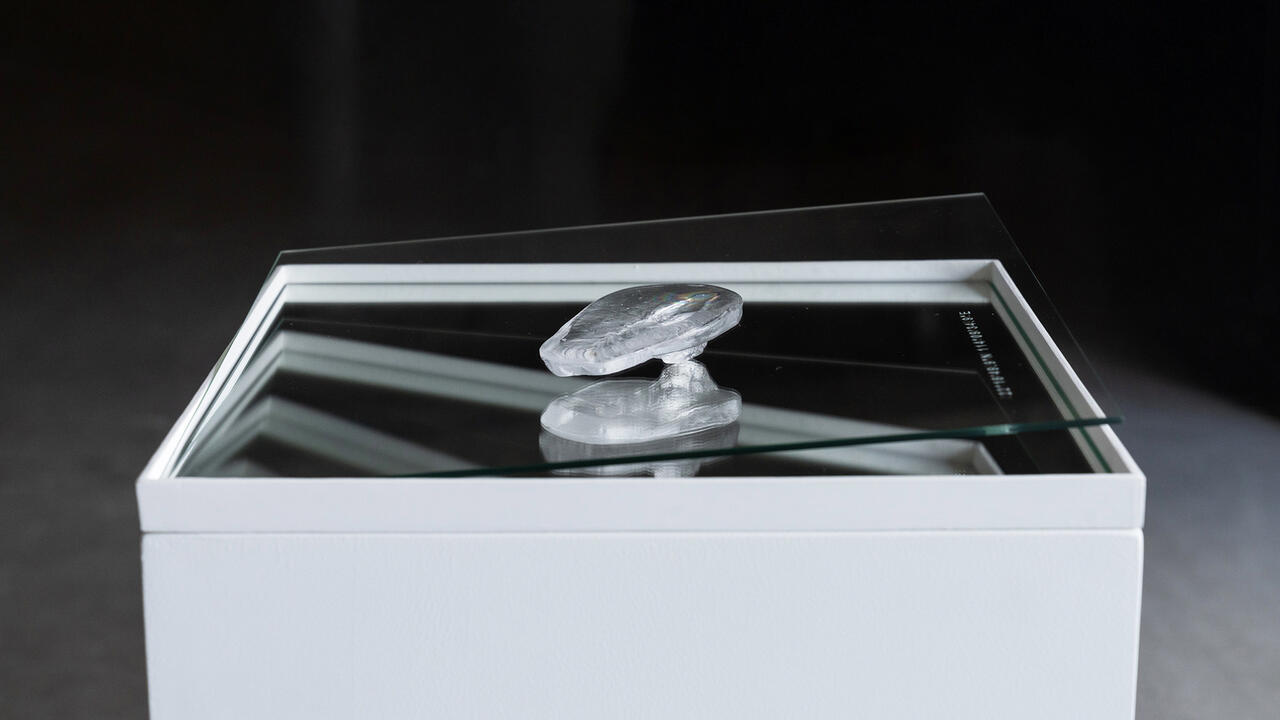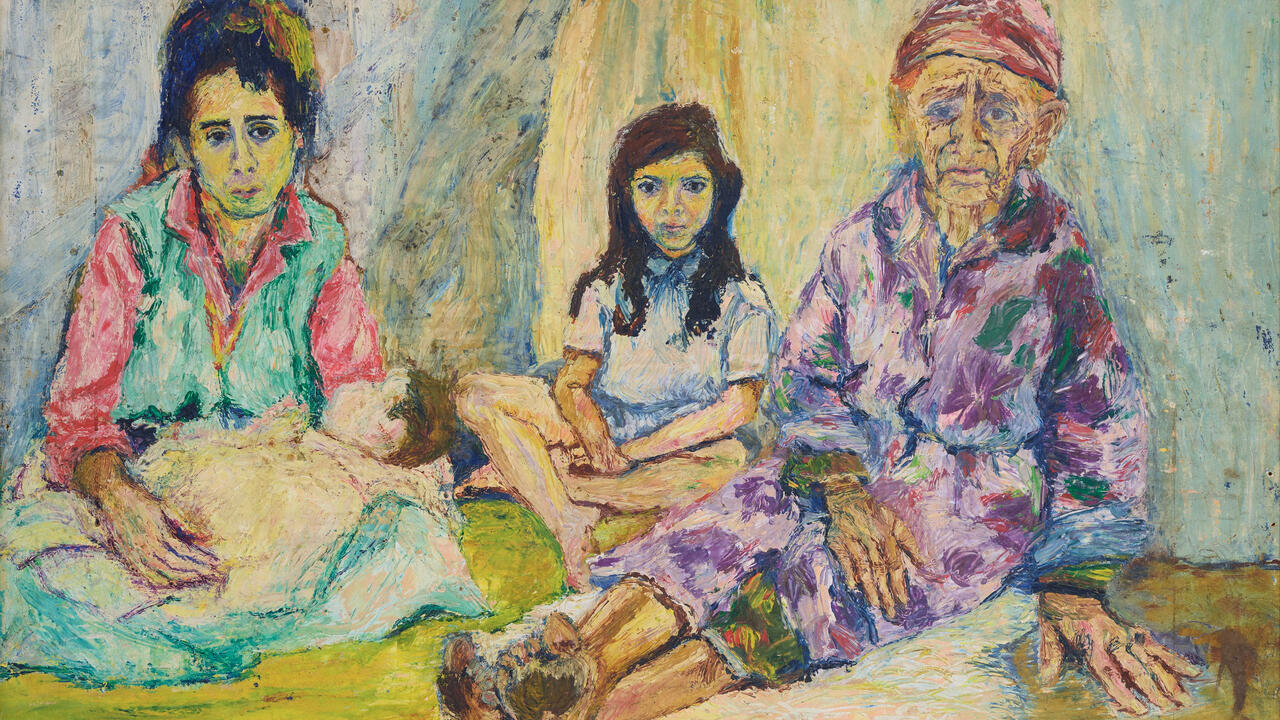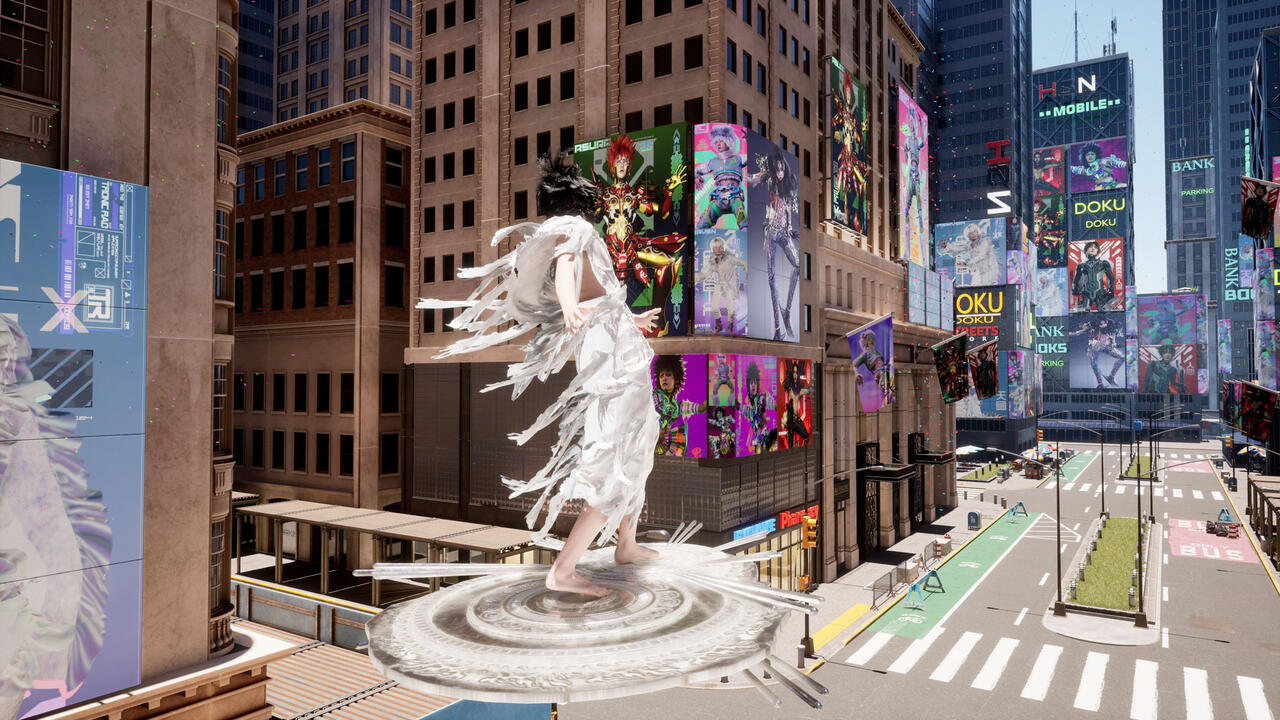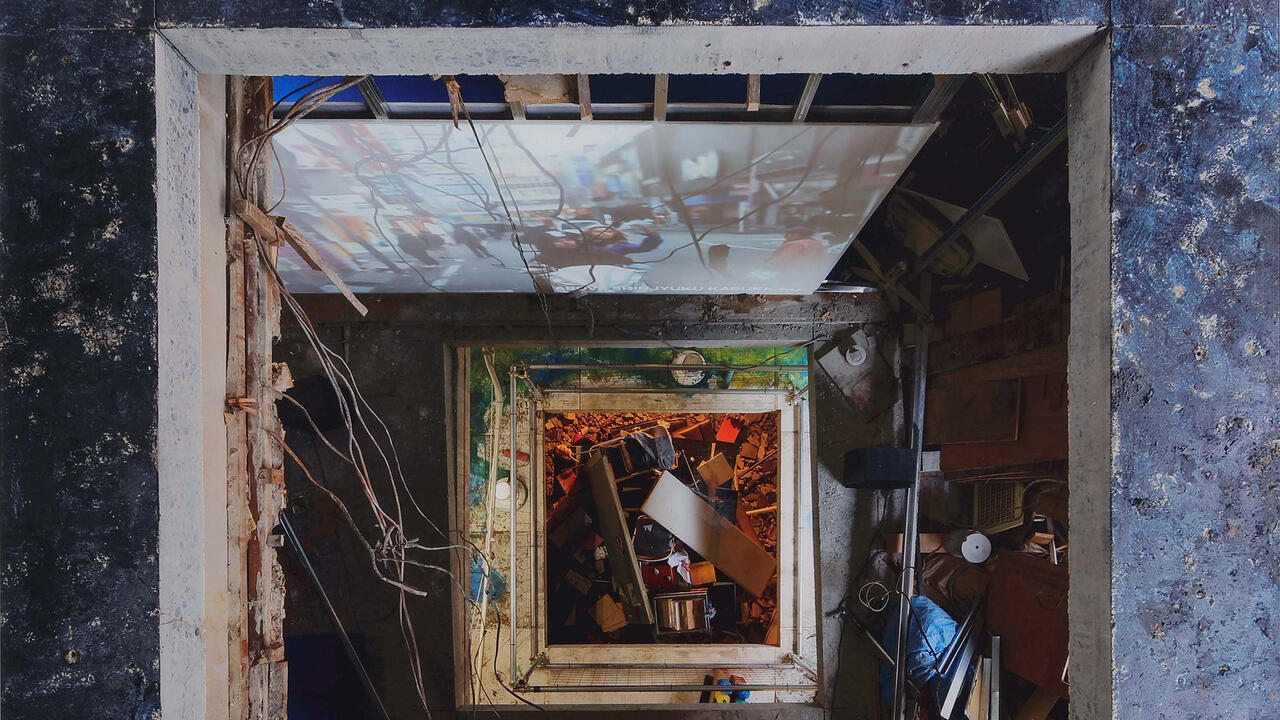Postcard from Hong Kong
Is a shipping container a good metaphor for a white cube, or vice versa? A survey of the city's current art scene, from new to old to reopened spaces
Is a shipping container a good metaphor for a white cube, or vice versa? A survey of the city's current art scene, from new to old to reopened spaces

Well before Instagram filters put a permanent layer of blush on our lives, there was the Claude glass. In 19th-century England, this toy – a kind of clamshell piece constructed out of a darkened mirror – was used by romantic souls to experience nature in mirror form, redeem life out of its unfiltered blandness and add hues of gothic intrigue onto cliffs or hedgerows. (The English poet Thomas Gray advocated carrying two ‘black mirrors’ when out in nature: one for large things, the other for larger ones). In an entirely apt corruption of that history, the title of the television show Black Mirror (2011–ongoing) recalls both a darkened computer screen and these Claude glasses. The wisdom of Black Mirror lies in its perception that the further outward we go technologically, the more inward and backward we become. In one of the episodes, ‘heaven’ is presented as a place of a continual shopping experience between ‘eras’, where numerous styles co-exist in brains severed from bodies. Is this a metaphor for capitalist dream-catching or technological hell?
If there is a drama to darkness, as in the television show, there also exists a form of dark levity. In Hong Kong, the bunker-like, light-resistant, black-cube space Empty Gallery seems deliberately built for experimentation with the dark arts of virtuality. The concrete space, which re-opened in December of last year, is located on the 18th and 19th floors of an industrial building in Tin Wan, Aberdeen, on the south side of Hong Kong Island. The gallery architecture – tailored for performance and music – reflects its founder, Stephen Cheng’s, taste for experimental or ephemeral media. (Hence, presumably, the name Empty Gallery). It is also conceived as a counterpoint to the white cube gallery settings that lie on the other side of Hong Kong. In a city famous for its verticality and lack of space, Empty Gallery’s exhibition area, at 418 square metres, is roomy. Its effect on Hong Kong’s art, then, will likely be measured by the extent to which it can mobilize its impressive architecture toward art stemming from non-conventional formats. (Empty Gallery is not unique: Spring Workshop, a residency programme in Hong Kong that also aims to explore time-based media, will soon launch a Kunsthalle for Music, conceived by Ari Benjamin Meyers, in collaboration with Witte de With in Rotterdam).

In December, the Empty Gallery celebrated its re-opening and the inauguration of a new floor with a two-part exhibition, slanted toward the black mirrors of virtual worlds and experiments in the media of abstraction. On the 19th floor of the gallery, Japanese filmmaker Takashi Makino presented a film, Cinéma Concret (2015), in which layers of 35mm celluloid and digital video have been superimposed to arrive at a hallucinatory ensemble of shapes and sounds: a mesmerizing wash of footage upon footage. The film, which recalls the experiments of Stan Brakhage, was originally screened at the International Film Festival in Rotterdam, and was presented here with a new score by Dutch sound artist Rutger Zuydervelt.

In the next of Empty Gallery’s two spaces, the young Berlin-based artist Hans-Henning Korb presented his ambitious first solo exhibition, ‘Kaya Cynara’. Nestled within the Empty Gallery’s dark architecture of sensory deprivation, Korb’s immersive presentation was a shamanistic micro-world in which kitsch was not resisted but rather ecstatically embraced. On one wall was a projection of mother-of-pearl visual effects, including the slow, shining movement of a slug, a nude body and other imagery of new-age wellness or virtual hippiedom. On the floor lay a crumple of post-natural-seeming debris, in vibrant colours, and other indiscernible artefacts of shamanistic visuals. In a second room, a (real) man squatted next to a vessel filled with black water and artichokes, presented in star-shaped cups (ceramics by Jonas Wendelin). (‘Would you like to drink it?’ someone asked, handing me a cup, as though of psychotropic elixir.)
The ‘journey’ suggested by this exhibition-as-experience was completed by means of the VR headset included in a chamber-within-a-room intended to resemble an artichoke heart. This VR headset ‘transported’ one into a distinctly screen-saver like abstract environment. Whether ironical or earnest in its kitsch leanings, I can say the two exhibitions were a strong statement for the re-opening of the gallery, which – with its dedication to music and performance – seems to position itself deliberately outside of the simple drag-and-drop globalism of art transfer.

Crate-and-container globalization was deliberately interrogated by the show which opened that week at Para Site, Hong Kong’s oldest non-profit art space. ‘Creative Operational Solutions’, curated by Cosmin Costinas and Prem Krishnamurthy, considered the ways in which capitals across the world have often shimmied to prominence through the ritualistic mimicry of symbols imported from London or New York. The majority of the works on display were produced by artists whilst participating in the Container Artist Residency 01, a programme initiated by artist Maayan Strauss, which took place aboard a container ship. Strauss’s project is inspired by the conditions of art’s transfer today, asserting that ‘global commerce’ is the ‘artist’s own immediate work environment’. This reality is acutely felt in Hong Kong, resonating with the island’s own history. Once a fishing village, Hong Kong is now a major shipping port, and rose to be a paradigm of globalized capitalism in part through its role in the opium trade. This is the story presented in the show’s ‘historical’ section, assembled by Qu Chang, which included paintings depicting the Opium Wars, ephemera from the United Kingdom Tea Company, historical artefacts and a map of the opium trail within Southeast Asia.

Viewing the work of other residency artists, including Mari Bastashevski, Tyler Coburn, Erin Diebboll, Ferenc Gróf, Christopher Page and Samson Young, I wondered: Is a shipping container a good metaphor for a white cube, or vice versa? Samson Young, who will represent Hong Kong at this year's Venice Biennale, showed ‘What the Lighthouses Taught Me’ (2016), a series of sensitive, colourful, diagrammatic drawings made during his time on the container ship, representing time and space and the ambient experiences of living on a vessel. The collective Zheng Mahler’s installation A Season in Shell (2013–16) looked to histories of currency and trade, presenting 230 porcelain objects glazed with abalone. Tyler Coburn’s Resonator (2016–17) project considers the phenomenon of ‘resonant frequency’, which stipulates that all objects have a specific frequency that will make them resonate. According to information contained on the downloadable .zip file that is one part of Coburn’s project, Nicola Tesla once walked through Wall Street in New York wielding an oscillator. After spotting a partly built edifice, Tesla attached the oscillator to a steel structure and – identifying the resonant frequency of the steel – is said to have caused a near-earthquake in New York’s financial district that sent workers panicking.

Other effects of global trade were palpable in Hong Kong’s smaller spaces, such as Holy Motors, located in a shop-front space in Hong Kong’s Sham Shui Po neighbourhood, which is filled with vast electronics markets. Rob Chavasse’s project there was a comical video of a humanoid piece of jewellery, which hangs from a roving tyre while a stock-style ticker emits words like ‘irrability’ and ‘insomnia’: side effects of advanced capitalism. For the exhibition '→' at Blindspot gallery, the artists South Ho Siu Nam and Trevor Yeung curated works by 16, mostly young, Hong Kong colleagues. As expected in a show with no curatorial framing other than friendship, the works were varied and sprawling, albeit heartfelt. My favourite was a piece by Chloe Cheuk: Since We Last Met (2015), a discreet installation in which two cups each contain a toothbrush, one of which rotates in its cup diurnally, achingly.

A visit to the Pedder building in Hong Kong rounded off my visit. At Simon Lee Gallery, I found a great grouping of German Hans-Peter Feldmann’s undated works, in which copies of historical paintings – by artists including Francisco de Goya – are subtly redacted to contain anachronistic gestures or details, such a bikini tan or a cheeky wink. Two scenes depict the sitters, in 19th-century formal dress, closing their eyes, as if responding to an unexpected an iPhone flash. In another, a squat girl sourced from Goya’s court paintings wears a clown nose like Patch Adams. It all goes to show that sometimes what art needs isn’t mercantile commentary, black mirrors or heartfelt romanticism, but a little clown-nosed humour.


















